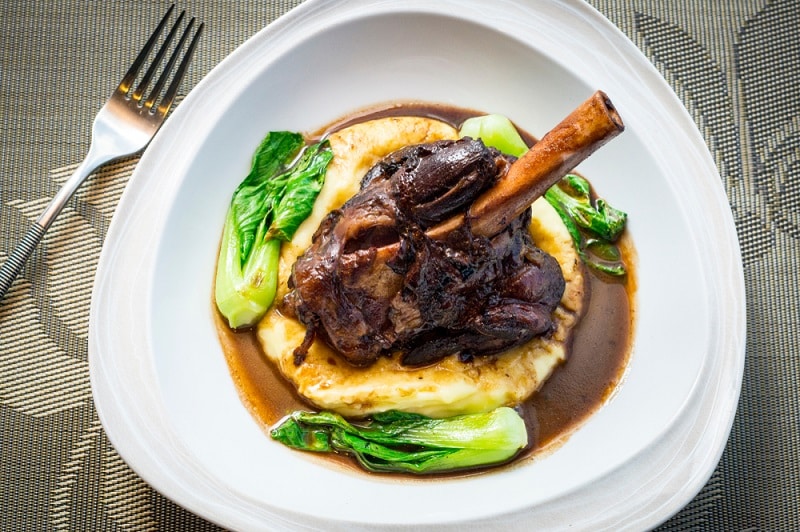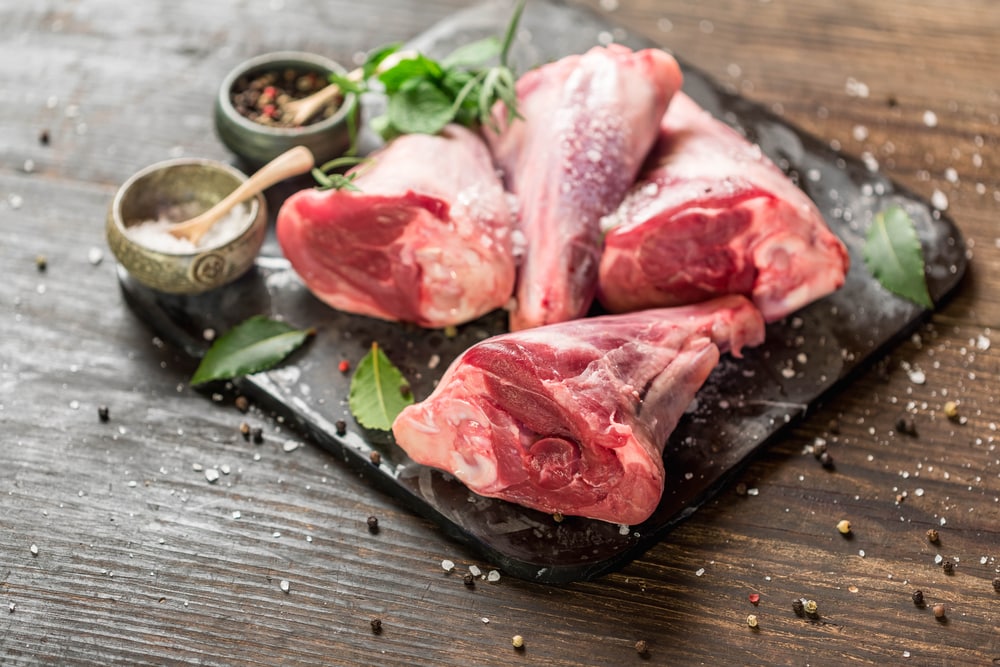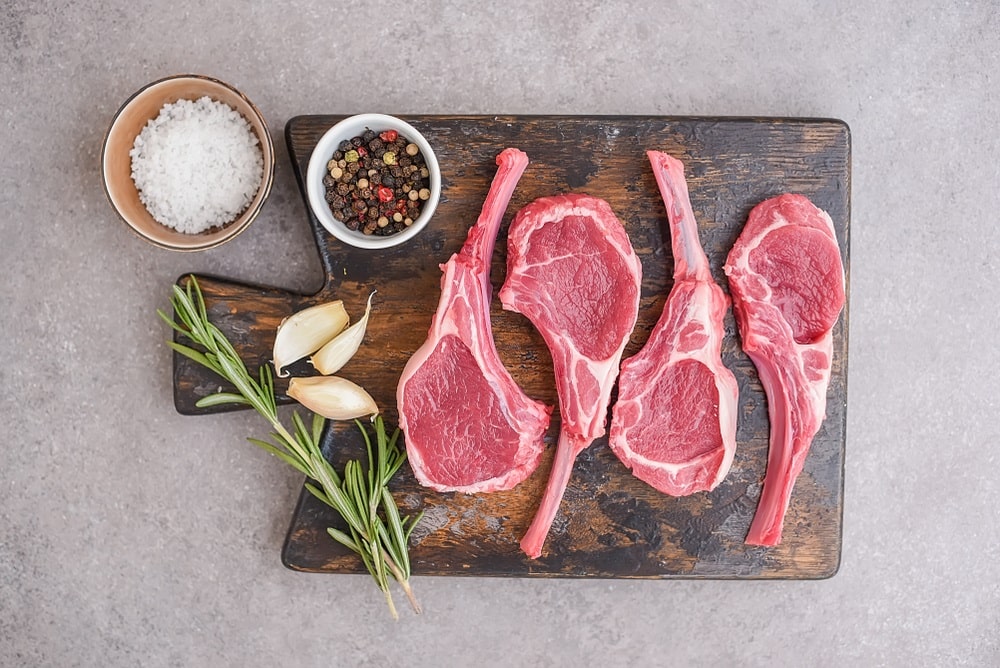
Lamb is one of the most delicious and nutritious red meats out there. It has a firm yet tender texture and achieves a strong flavor when it’s roasted.
There are actually various cuts of lamb, and all of them have distinct flavors and textures. In fact, some of them are rich in fat and have a hint of smokiness.
Lamb shank and lamb chop are the two most commonly used cuts, and with this article, we are sharing the differences between them!
Lamb Shank vs. Lamb Chop
Comparison Table
| Features | Lamb Shanks | Lamb Chops |
| Cut | Shin | Spine |
| Flavor | Bold and gamey | Tender and mild |
| Cuisines | Mediterranean | Middle Eastern and Mediterranean |
| Recommending cooking methods | Braising and stewing | Baking, broiling, grilling, and stovetop cooking |
| Cooking time | Long | Short |
1. Lamb Shank
Lamb shank is cut from the lamb’s shin, and it is considered one of the most flavorful cuts. There is a lot of connective tissue in the cut, which gives it a distinct flavor.
However, if the lamb shank isn’t prepared correctly, it can lead to a tough texture as well. It has to be cooked at low heat for a longer period to make sure the meat becomes flavorful and velvety.
It’s widely used in Mediterranean cuisines, including Moroccan, Italian, Greek, and French cuisines. Since it is gamey and bold, it pairs well with cloves, cinnamon, and other warm spices.
In addition, it tastes amazing with mint and rosemary. Many chefs prefer cooking it in liquids, such as meat stocks, beer, and wine, as it helps tenderize the meat.
The Cut
This is a tough cut taken from the leg of the lamb, and upon low and slow cooking, it becomes juicy and tender. The hind shank comes from the back legs, and the foreshank is cut from the front legs.
It’s loaded with collagen and connective tissue, which is why it needs braising and/or stewing. It’s available in cut form, and the center bone is left intact.
It’s usually cooked with bone. The shank is an affordable cut as it needs longer cooking time. Braising is the most recommended cooking method as it prevents the drying out of the meat.
In addition, braising helps melt the bone marrow into the braising liquid, which results in a full-bodied and rich sauce. However, if you don’t like to braise, you can cook it at low heat.
The pot’s lid has to be kept on to retain moisture. Keep in mind that this cut cannot be sautéed or pan-fried because it can make the texture tough.
In most cases, it has a thin white membrane, which can be melted during cooking, or you can trim it away. In addition, you should brown the meat before braising or slow cooking to deepen the flavor.
Taste
Lamb shanks have an extremely strong gamey flavor. The lamb shanks of American lambs have a milder flavor as compared to Australian or New Zealand lambs.
The bold flavor of lamb shanks goes well with aromatics and marinades, such as lemon peel, fennel, ginger, garlic, rosemary, and onions. Once cooked properly, it becomes juicy and tender – it starts to fall off the bone.
2. Lamb Chops
Lamb chops are taken by cutting at a perpendicular angle to the spine and create a single serving of meat. Traditionally, this cut is cooked and served with a bone.
The lamb chops also have some parts of vertebrae and ribs, depending on the lamb’s region it’s cut from. The best lamb chops come from sirloin, loins, and ribs.
The lamb chops are extremely tender and easier to cook. In addition, they have an even texture. They are light red in appearance, and the fat layer is evenly distributed. This cut has gained popularity in Middle Eastern and Mediterranean cuisines.
The Cut
The lamb chops are cut from the spine area of the lamb, particularly ribs, sirloin, or loins. The meat has a light red color and a fine texture. The lamb chops cook pretty quickly because they are thinner.
This cut goes well with dry rubs, such as spice and herb rubs. However, don’t use acidic marinades for this cut because it can break the already-soft meat – it will make the meat mushy.
Taste
Lamb chops have an exotic taste and are extremely juicy. When cooked at rare or medium temperatures, they become moist, tender, and juicy.
However, well-done lamb chops can be a bit dry and stringy. It’s recommended that you cook the lamb chops at a minimum of 145 degrees Fahrenheit to kill the bacteria.
Final Verdict
The bottom line is that lamb shank is a recommended cut for people who want something affordable and don’t mind long cooking times. On the other hand, lamb chops can be cooked pretty quickly, but they are more expensive.



